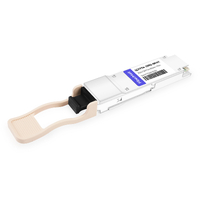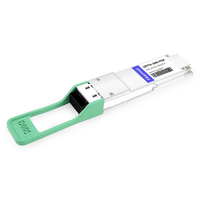Optical transceivers are among the most important elements necessary to uphold connectivity and the proper functioning of networks, especially in the broadband parts of the networks. Most of these products have been developed by Cisco, and one of them that captures attention is the Cisco QSFP56, which is a relatively new product designed to satisfy the needs of hybrid and cloud data centers. As part of large-scale data processing and transfer, the QSFP56 module is superior in terms of bandwidth while at the same time being relatively energy-efficient, thus making it one of the providers of advanced technology in optical communications. The article discusses the key features of the Cisco QSF56 and how they help the particular equipment meet the emerging needs of the network infrastructure and the modern data-reliant society.
Table of Contents
ToggleWhat is Cisco QSFP56, and Why is it Important?
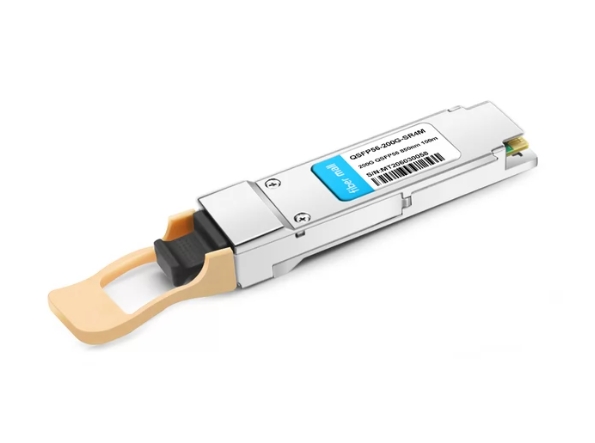
The Cisco QSFP56 is an optical transceiver module aimed at the 200 GbE (Gigabit Ethernet) networking architecture. The reason for its significance is that it improves bandwidth consumption while minimizing energy usage, which is critical for transforming network infrastructures in hybrid and cloud-based settings. Its small size helps in high-density data processing, making it ideal for modern data centers that want to improve their greater data needs in a streamlined manner.
Understanding QSFP56 Transceiver Technology
The technology of QSFP56 transceivers builds upon prior generations’ technology features by incorporating sophisticated modulation formats and signal processing methods to allow higher data transmission rates and lower power consumption. This transceiver module is based on 4-channel form factors and employs PAM4 (Pulse Amplitude Modulation 4-Level) that practically doubles the transmission rate as compared to NRZ modulation used by previous models such as the QSFP28. Each channel in QSFP56 provides 50 Gbps, with a cumulative rate of 200 Gbps worth of data for each of the modules. In addition, its compact design facilitates easier and more efficient deployment within current systems, thus enhancing performance across a range of network scenarios. The QSFP56 is compliant with all IEEE requirements, as well as MSA (Multi-Source Agreement) definitions, meaning it can work with and be integrated into numerous different kinds of network equipment and structures. This multi-faceted technology, therefore, is particularly well-positioned to meet the needs of high-speed connectivity that are increasingly prevalent in data-centered businesses, allowing for easy deployment in many different types of ecosystems while being fit for different energy profiles.
Overview of Cisco’s Role in Optical Networks
Having a strong presence in the designing and manufacturing of optical networking solutions has been part and parcel of Cisco’s business strategy since its inception. Their optical portfolio comprises multiple products and technologies built to improve the performance of the network, scalability, and efficiency across the enterprise and service provider networks. Below is a detailed list of Cisco’s contributions to the optical networking landscape:
- Optical Transceivers and Modules: By making available wide variants such as the QSFP56 the SFP+ and the CFP2, they ensure inter operable and power efficient high transmission networks across manyetworks.
- Optical Transport Systems: With the adoption of the NCS 2000 series, Cisco has again set the bar high by offering flexible, high capacity adaptive transport to metropolitan, regional, and long haul networks.
- Dense Wavelength-Division Multiplexing (DWDM) Solutions: Cisoc’s DWDM technology facilitates the conveyance of multi signals over one optical fiber through the use of varying wavelengths, therefore ensuring optimum capacity and efficiency of the network.
- SDN Integration: Resource efficiency is made prudent via the integration of SDN into existing Cisco networks owing to the increased capacity for automation and optimization of the network.
- Integration of Networks and Networks Functions Virtualization: Cisco encourages the consolidation of multiple network levels, which simplifies and increases the efficiency of operations by providing systems that enable IP over DWDM (IPoDWDM) and Network Functions Virtualization (NFV).
- More Level of Modulation Schemes: Advance modulation techniques for instance PAM4 and coherent optics are applied by Cisco in order to boost data rates and improve the range of missions performed such as the inter connections of high density data centres as well as other cloud based services.
Last but not least the distinctive methods Cisco uses to build an optical network further strengthens the spirit of innovations the company embraces in its solutions and guarantees the relevancy of the offering against other players in the industry that focus on currently needed networking capabilities, as well as expansions in the scope of networking activities envisioned in the future.
Key Features of Cisco QSFP56 Modules
The features and significant benefits of Cisco QSFP56 Modules have been designed since there was a need for contemporary high-speed networking. New designs provide substantial shifts in support of bandwidth demand as the modules are capable of the following:
- Improved Data Rates: The QSFP56 module offers support for both 200-Gigabit Ethernet and 400-Gigabit Ethernet which facilitates superior performance better able to meet data-centric needs.
- Better Power Rating: Sustaining a lower power rating improves these modules’ efficiency which is particularly important for mass data centre deployments where this aspect along with heat must be taken into consideration.
- Greater Compatibility: They achieve compatibility with numerous existing systems and hardware infrastructure thus ensuring smooth federation with the currently used network without extensive remodelling.
- Improved Modulation Support: The use of PAM4 modulation ensures better performance for the QSFP56 module, making it more suited for data transmission in the current context of complex bandwidth requirements.
- High-Density Design: The complexity in the form factor allows for less expansive network configurations which makes it easier for providers to increase network density within reduced physical area bringing forth both cost and scalability benefits.
These features make Cisco QSFP56 modules a preferred option for companies wishing to invest in their availability in the future, as they are the most up to date network infrastructures of the modern world.
How Does the Cisco QSFP-200G-SR4-S Module Work?
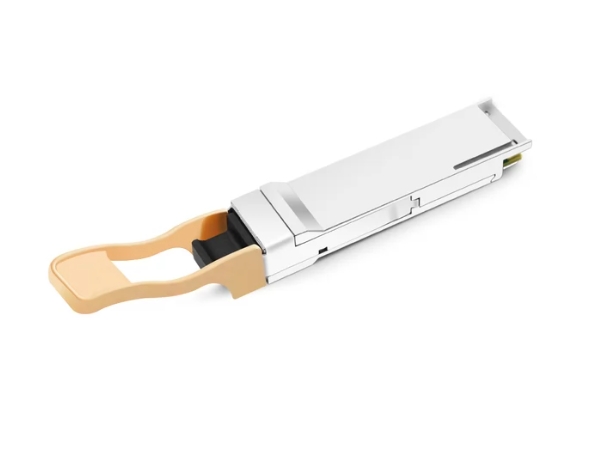
Exploring 200GBASE-SR4 Specifications
The Cisco QSFP-200G-SR4-S supports 200GBASE-SR4 standards and is able to provide high-speed data services, which are probable in a multi-mode fiber (MMF) network. The key specification is that it transmits 8 channels of 25 Gb/s each, resulting in 200 Gb/s overall throughput. This module functions at approximately 850 nm and is capable of supporting links of OM4 MMF over 100 meters in length. 12 MPO connectors are used to interface the components, which guarantee connectivity and reduce signal loss. Also, the module has a Digital Optical Monitoring (DOM) capability that allows checks in real-time of conditions and faults and, therefore, improves network dependability and maintenance.
Compatibility with Multi-Mode and Optical Fiber
The Cisco QSFP-200G-SR4-S module was developed with the compatibility of multi-mode fibers in mind, which is quite important, especially in ensuring that there is efficient transmission of data in different networking zones. In particular, this module works with OM3 and OM4 multi-mode fibers, thereby covering the properties of most fibers present in the data centers and HPC. OM4 fibers increase the link length by allowing up to 100 meters, while OM3 fibers will allow a distance of up to 70 meters in most cases.
Additionally, the module has an MPO-12 connector interface, which allows for easy integration with already constructed networks without the need for vibrant changes and settings. This enables compatibility that permits simple installations and decreases the chances of signal loss as a result of not matching the existing connectors. Furthermore, through the implementation of sophisticated modulation methods and Digital Optical Monitoring, the module is able to cope with different optical fibers, ensuring that the data transmission is uninterrupted and the performance is the same. Such ability is instrumental in catering to changing networks and providing the required level of customization for future needs without changing the whole structure of the deployments.
Benefits of 850nm Wavelength and MPO-12 Connectors
The Cisco QSFP-200G-SR4-S module is relevant in optical short-range communication for the use of 850nm bandwidth wavelength in their data transmission. Multi-mode fibers semi-automatically adjust to this wavelength much better than single mode fiber, and this is why they are common in data centres, due to their cheaper cost. This lesser wavelength enhances the characteristics of the light transmission through these fibers as they tend to have less divergence in the case of data transmission over the given length of links.
MPO-12 connectors also improve the capabilities of the module as they provide high-density drives, which are critical because of the desire for scalable and space-efficient network systems. Most importantly, they incorporate fast points to existing points in the infrastructure while incorporating broadside signals essential in the fast transfer of data. For even more data rate I/O capabilities, these connectors were also designed to assist the module in quickly and easily adapting to the higher demands of the network. It can be concluded that the use of 850nm wavelength and MPO-12 connectors complement each other so that the module continuously serves in a variety of challenging networking conditions.
What Types of Cisco QSFP56 Cables Are Available?
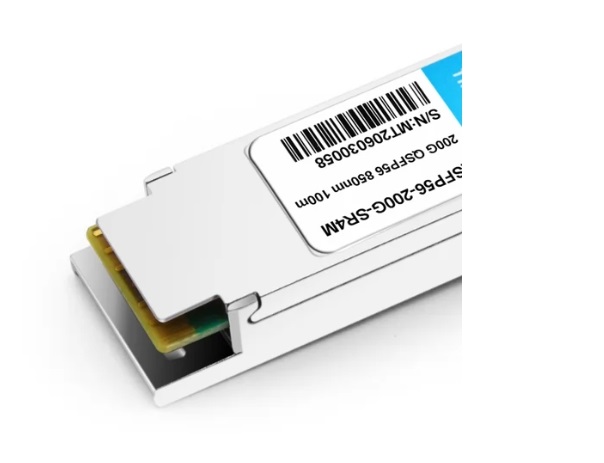
Direct Attach Copper Cables: Options and Uses
In networking environments, Direct-Attach Copper (DAC) cables are an integral part of the equipment when low-cost and simple short-range data transmission connections are required. They come in different forms, such as passive and active versions, which serve different purposes depending on the network’s needs.
Passive DAC Cables do not need external power supplies to function. Short range connections around 5 meters to be exact, are their most common use e.g. Inter rack connections where current consumption is a big factor. Passive cables are preferred in instances where a lower reach is adequate for a connection due to the availability of funds, and there is no critical dependency on data quality across the network.
Active DAC Cables do the opposite as they come equipped with operable components which help reach farther distances as far as 15 meters. That distance could come in handy in data centers with great requirements for signal clarity over significantly-longer ranges. This Active continuum on the other hand, while being the inverse in low power consumption operating at higher server loads gets significantly more range without losing quality.
The selection of either passive or active DAC cables varies depending on network topology type, distance requirements, and costs. Their integration into Cisco QSFP56 systems makes them an ideal and reliable solution for data center interconnects and hence, should be regarded greatly in high density networking applications.
Active Optical Cables vs. Passive Copper Alternatives
Data transmission speed and range are two of the distinguishing factors highlighting the capabilities of AOCs over passive copper wires alongside weight. One hundred meters is typical for unresponsive AOC links, enabling transmission over longer distances without losing signal integrity. Hence, it is effective when linking different pieces of hardware within large data centers or campuses. Moreover, AOCs also require less space since they are lighter and thinner than copper wires, making outlet management simpler.
On the other hand, a passive copper cable is only able to operate on distances between 5 to 10 meters, since any longer, there would be a greater drop in the signal’s strength over time. Passive copper wires are however more cost-efficient for short-range deployment while also being controllable for other environments that don’t prioritize distance.
Decision making on whether to go for a passive copper wire or an AOC is determined by the particular specifications for the data center, among them being distance, amount of data to be transmitted, allowance and weather conditions. The increased area coverage provided by AOCs makes them great for reaching out to foreign bandwidth sinks that passive copper does not do efficiently due to its limited range.
Patch and Optical Fiber Cables for Data Centers
Both patch cables and optical fiber cables occupy crucial positions in the configuration of infrastructural components in a modern data center. Network patch cables, which are usually made from copper, are used to make short connections between network devices such as patch panels and switches. Network patch cables allow quick configuration changes to be accomplished at a minimal cost for shorter deployments, and thus are optimal in situations when networks are subject to frequent changes.
Optical fibers, on the other received center stage in data centers with an emphasis on distance covering and high bandwidth. Optical fibers are embedded in these cables which allow them to carry information at far distances with little attenuation, making them ideal for linking data centers, server rooms, and large network systems. In addition, single-mode and multi-mode fibers are available to meet various distance and performance requirements, with single mode suited for long-haul and multi-mode for short high-speed links.
When deciding to use patch or an optical fiber cable consider the performance requirements, distance constraints, and cost. Thanks to Patch and Optical fiber utilizing their unique capabilities the Data center Network Operations can transition towards being scalable, efficient and resilient while meeting the modern technological and infrastructural demands.
How to Ensure Compatibility with Cisco QSFP56?

Understanding Cisco and Third-party Compatibility
It is necessary to confirm that the external transceivers selected meet Cisco requirements with respect to data rate and wavelength in order to be able to work with Cisco QSFP56 modules. Furthermore, make sure that these components have been vigorously tested for compliance to guarantee that they are easily configured with existing hardware and software components of the Cisco ecosystem. Also, source third-party vendors who have been involved in providing quality networking solutions so as to minimize disruptions in the operations.
Ensuring Compliance with QSFP-DD and MSA Standards
Transceivers that comply with QSFP-DD (Quad Small Form-factor Pluggable Double Density) and MSA (Multi-Source Agreement) are essential to ensure connectivity and performance in high-speed networking environments. QSFP-DD is capable of carrying up to eight electrical lanes, thereby making data rates up to 200 Gbps and 400 Gbps achievable, making it attractive for future data center operators. In this context, transceiver modules should go through stringent tests to check signal integrity and thermal and EMI specification compliance achievement before the modules are manufactured.
In order to compliant to MSA, moduless (a.k.a. transceivers) have to meet defined parameters set within the industry so as to allow for cross-compatibility and expansion among the market. This involves satisfying some physical, mechanical and electrical specifications as mentioned in the MSA agreements so that these transceivers can work together across various networking implementations. Within the MSA documents, testing and certification are very important since the performance of the components in relation to connectivity technologies in the real world across varying use cases is validated against set measures.
Evaluating Cisco QSFP56 Supported Devices
A program’s performance is one of its parameters, which has to be attended to while evaluating devices that fit into the Cisco QSFP56 ecosystem. Such devices are now becoming a key building block in enterprise networking, enabling 200 Gbps applications. There outline a number of issues when evaluating such devices, one of them is how well they are going to be integrated into the current network and whether backward compatibility will make the transition smoother. The devices that are supported by Cisco usually have optical technologies that ensure that there is good signal quality with low latency. The approach of supporting multi-vendor integration means that such devices can be deployed at varying conditions or environments and still be operative. The websites most actively participating in the debates around Cisco QSFP56 devices stress both the requirements and issues, thus broadening the focus to encompass strong, adjustable networking systems that can be fit for the increasing requirements of data.
What Are the Key Applications of Cisco QSFP56 in Data Centers?
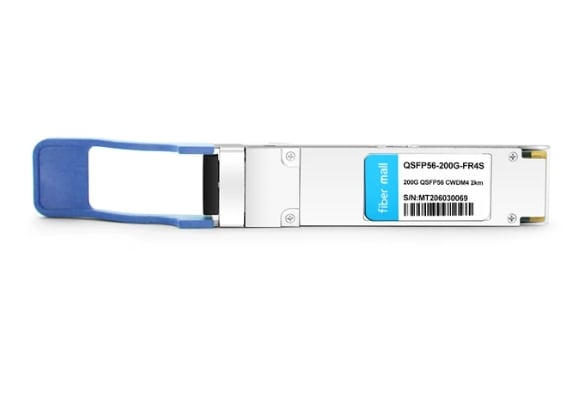
Enhancing Gigabit Ethernet and Data Transmission Rates
The upgrade provided by the Cisco QSFP56 enables Gigabit Ethernet and data rate expansion up to 200 Gbps connectivity, which is important for most data center applications that deal with large amounts of traffic. These modules extend the network capabilities without the need for building new resources, and improve network efficiency. By employing sophisticated modulation techniques, they are able to minimize operating distortion while lowering the delay. Moreover, installing different devices is facilitated as such devices are provided with a broad field of compatibility, making the upgrade and expansion measures within networking environments more convenient.
Role of Cisco QSFP56 in High-Performance Computing
Cisco QSFP56 modules are very important in HPC environments as they cater to the high-speed data transfer requirements that are characteristic of such systems. These modules have the capability of supporting 200 Gbps speeds, which, given two nodes, facilitates the speedy transfer of data, which is needed in computations that are data intensive. It is important to maximize data throughput and minimize latency for applications that require real-time processing of data, including simulations, data analytics, and machine learning models. Also, the support of older standards by QSFP56 eases the migration to new standards in HPC systems, allowing for gradual changes without major system re-engineering. This guarantees that computing environments are optimally performant and can satisfactorily address the growing complexity of current-generation computing tasks.
Optimizing Data Center Networks with QSFP56 Technology
When shifting to a QSFP56-enabled technology data center environment, one should amplify the bandwidth, optimize data transfer, and minimize latency between the nodes. According to leading-edge approaches, the solution for such problems is straightforward – put in QSFP56 modules with interconnects that are capable of data rates of as high as 200 Gbps. The target of these operations is to improve the responsiveness to the growing demands for data throughput. Top-performing websites recommend using those modules as a way to enhance current infrastructure without replacing all the existing gear because they optimize on a number of volumetric constraints. This integration is made smoother by the use of new advanced modulation techniques that maintain a high level of signal integrity with minimum delays, which enhances the quality of the entire network. It is necessary to carry out all the transitions outlined to maintain high-performance activities and to accommodate the changes in the contemporary needs of the data center.
Reference Sources
Frequently Asked Questions (FAQs)
Q: What is the 200g QSFP56 Optical Transceiver Module?
A: The 200g QSFP56 Optical Transceiver Module is used in the transmission of high speed data links. The Evaluating Feature Interconnected Systems Signals of the Mass is an acceptable standard for 200 gigabits per second of data transmission, and multiple networks are compliant to this protocol to ensure the provision of reliable and efficient Ethernet connections in data centers.
Q: How does the 200g QSFP56 compare to 100g and 50g modules?
A: Compared to both 100g and 50g modules, 200g QSFP56 offers a higher data rate enabling faster data transmission which increases the efficiency of the device. As such, the device is relevant within data centers and other areas that have high data traffic.
Q: Are 200g QSFP56 transceiver modules compatible with existing Cisco equipment?
A: Yes, 200g QSFP56 transceiver modules are specifically designed to be compatible with several Cisco devices making it easy to install the modules in an existing network.
Q: What are the key features of the 200gbase-sr4 QSFP56 module?
A: The 200gbase-sr4 QSFP56 module is a cheap method of building short-range optical communication systems with bi-directional transmission capability. It has a distance optic cable supported with a distance of up to 100m hence proves useful in very short links and in most data centers.
Q: Do 200g QSFP56 modules come with Direct Attach Cables?
A: I’d say yes – 200g QSFP56 modules whereby direct attach cables and passive copper cables in a range of lengths would be supported and, in turn, increase the connectivity options on your network.
Q: What role does FEC play in optical transmission with 200g QSFP56?
A: FEC is very important in preserving data whenever a 200g QSFP56 using an optical transmission takes place as it performs a correcting function for any probable error in the course of data exchange transfer paving way for fast, effective and accurate communication of data.
Q: Do Cisco’s 200g QSFP56 transceivers exist?
A: All the sub-components that make a conglomerate transceiver module has specifications and compatibility, in addition to what has been stated, all the information related to modules in Cisco’s 200g QSFP56 transceiver is located in its datasheet. These documents encompass a complete answer to what is contained in the working principles of the modules, alongside all the technical specifications.
Q: Is it possible to find multiple optical wavelengths in one module?
A: Wavelengths are essential not only in 200g QSFP56 transceiver modules but also in other fiber optic transceivers, as these wavelengths define the type of fiber used in the communication system. Specific wavelengths and their usages are typically found in the module’s datasheet.
Q: Do patch cables used for 200g QSFP56 modules need to meet any specific configuration?
A: The 200g QSFP56 modules can be considered to be flexible since standard fiber optic cables can be used; however, it is always advisable to use compatible patch cables as they specification are within the required standards to deliver the best performance and connectivity.

